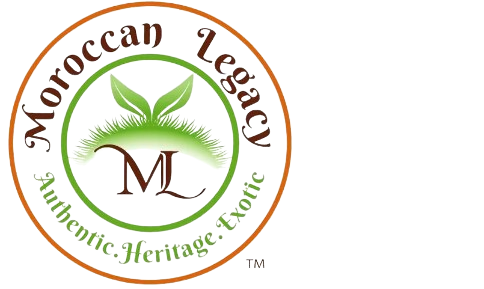Language plays a significant role in immersing yourself in the vibrant culture of Chefchaouen, a picturesque city nestled in the Rif Mountains of Morocco. As you explore this enchanting destination, you’ll encounter a rich tapestry of communication, primarily dominated by Arabic and Berber dialects. While Moroccan Arabic, also known as Darija, is widely spoken among locals, you may also hear the beautiful sounds of the Riffian Berber language. Understanding these languages can greatly enhance your experience, allowing you to connect more deeply with the local community and its traditions.
Advertisement
Key Takeaways:
- The primary language spoken in Chefchaouen is Arabic, specifically the Moroccan dialect known as Darija.
- Many locals also speak Spanish due to historical influences, making it a common second language in the region.
- French is frequently used in business and education, reflecting Morocco’s colonial history and ties to France.
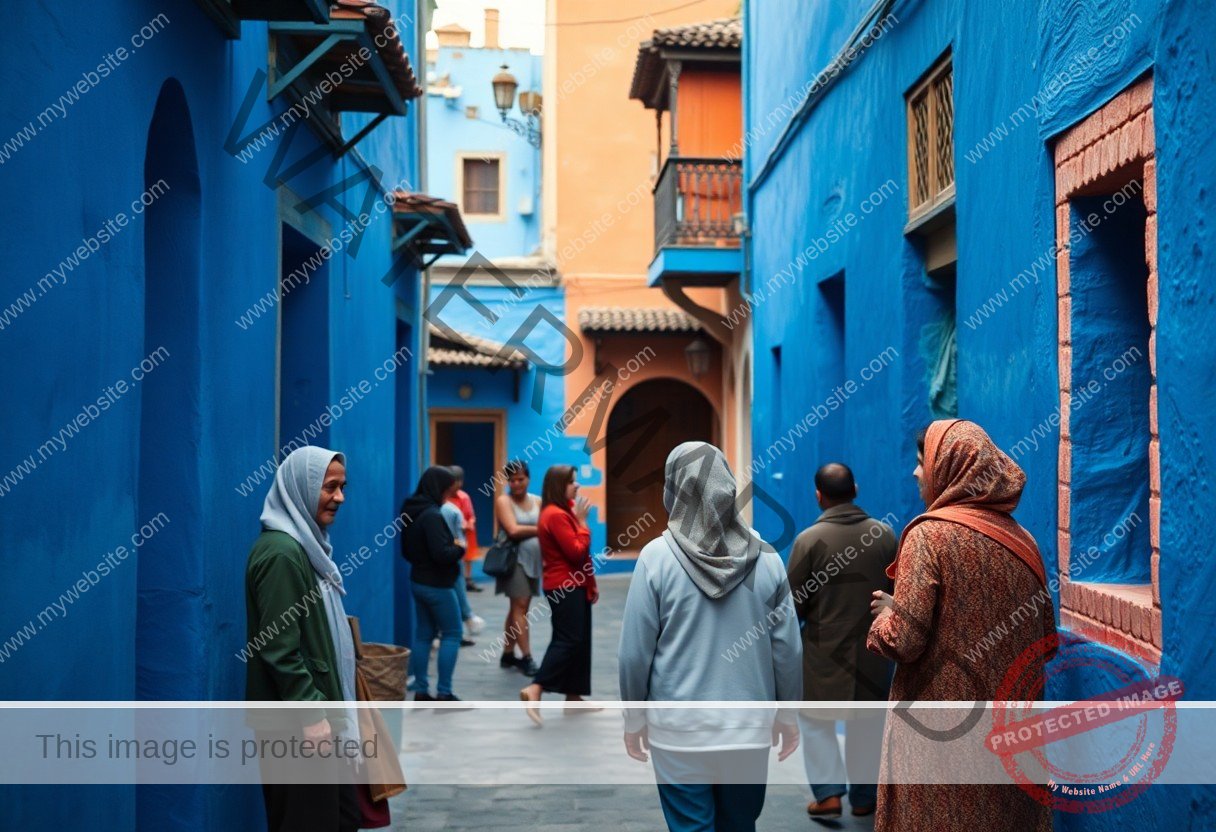
The Linguistic Landscape of Chefchaouen
Before you explore the charming streets of Chefchaouen, it’s important to understand its linguistic makeup. Nestled in the Rif Mountains of Morocco, this picturesque town reflects a rich tapestry of languages that represent both its diverse history and cultural influences. As you walk through Chefchaouen, the sounds of various languages will envelop you, creating a unique atmosphere that intertwines local traditions with global connections.
Predominant Languages
Between the winding alleys and vibrant markets, you’ll find that the predominant languages spoken in Chefchaouen are Arabic and Berber. Moroccan Arabic, or Darija, is predominantly used in daily communications, while Amazigh languages, specifically Tarifit, are spoken by the indigenous Berber population. English and French also have a presence, particularly in interactions with tourists.
Dialects and Regional Variations
Regional variations of the languages contribute to the unique identity of Chefchaouen. The Amazigh dialects differ significantly from one region to another, reflecting local customs and cultural nuances. In Chefchaouen, the Tariffit dialect is prevalent, showcasing distinctive phonetic characteristics and vocabulary unique to this area.
Landscape and culture deeply intertwine in Chefchaouen, making its dialects a window into the heart of its community. The use of local dialects like Tariffit not only helps you connect with residents but also enriches your overall experience as you examine deeper into the area’s traditions. As you engage with locals, you might notice variations influenced by neighboring regions, adding depth to the conversations and reflecting the vibrant cultural mosaic that defines Chefchaouen.
Historical Influences on Language
There’s a rich tapestry of influences that shape the language spoken in Chefchaouen, reflecting the city’s diverse history. Understanding these nuances will deepen your appreciation for the area. For more insights, check out Chefchaouen – VolumeOneHundred.
Berber Roots
Behind the vibrant streets of Chefchaouen lies a strong presence of the Berber language, which has shaped local dialects over centuries. The Berber people, indigenous to North Africa, contributed significantly to the cultural and linguistic landscape that you see today.
Arabic and Spanish Influence
Against the backdrop of shifting empires, Arabic and Spanish have left indelible marks on the languages spoken in Chefchaouen. The Moorish influence from Spain and the historical ties to the Arab world have enriched the local dialect, leading to a compelling blend of linguistic elements.
This fusion means you may encounter various dialects that incorporate both Arabic and Spanish vocabulary, creating a unique spoken experience. In Chefchaouen, you’ll find that many locals seamlessly switch between these languages, reflecting the city’s interconnected past and cultural heritage.
The Role of Language in Culture
Many aspects of culture are intertwined with language, shaping how communities communicate, celebrate traditions, and express values. In Chefchaouen, the linguistic landscape reflects the city’s rich history and diverse influences, fostering a unique cultural identity. By understanding the local dialects, you gain deeper insights into the shared experiences and social norms of the people, enhancing your connection with the culture.
Language and Identity
At the heart of identity lies language, acting as a symbol of belonging and heritage. In Chefchaouen, the interplay of Arabic, Berber, and Spanish contributes to a diverse identity that celebrates multicultural influences. By engaging with these languages, you can investigate into the local narratives that shape its vibrant community.
Language in Daily Life
To navigate daily interactions in Chefchaouen, awareness of local languages is invaluable. You’ll find that speaking or understanding a few words in Arabic or Berber can greatly enhance your experience during conversations with locals, in markets, or while dining.
But engaging with the languages used in Chefchaouen goes beyond mere communication; it’s about forming authentic connections. When you greet someone in their native tongue or inquire about their traditions, it shows respect and willingness to immerse yourself in their way of life. This not only enriches your travel experience but also fosters goodwill and mutual understanding, making your time in the city much more meaningful.
Educational Context in Chefchaouen
Keep in mind that Chefchaouen has a unique educational landscape that reflects its rich cultural heritage. The local schools offer a blend of Moroccan Arabic, Berber, and French languages, preparing students for a multicultural society. Your understanding of the educational context in this enchanting city will help you appreciate how language shapes the community’s identity and social interactions.
Language Education
Above all, language education in Chefchaouen focuses on multilingualism. Students are often taught Moroccan Arabic as their primary language, while Berber and French are also integrated into the curriculum. This approach not only fosters linguistic diversity but also helps you grasp the region’s cultural nuances effectively.
Preservation of Local Dialects
Preservation of local dialects is vital in Chefchaouen, as it ensures that the unique linguistic heritage is maintained. Schools and community programs actively promote the use of the local Arabic dialect, helping you connect with the stories and traditions uniquely linked to the area.
Hence, preserving local dialects is a community-driven effort in Chefchaouen. Various initiatives aim to document and teach these dialects to younger generations, ensuring that your visit to the city not only exposes you to its breathtaking sights but also enriches your understanding of its historical and cultural narratives. Engaging with locals will give you firsthand insight into their dialects, deepening your appreciation for this picturesque region.
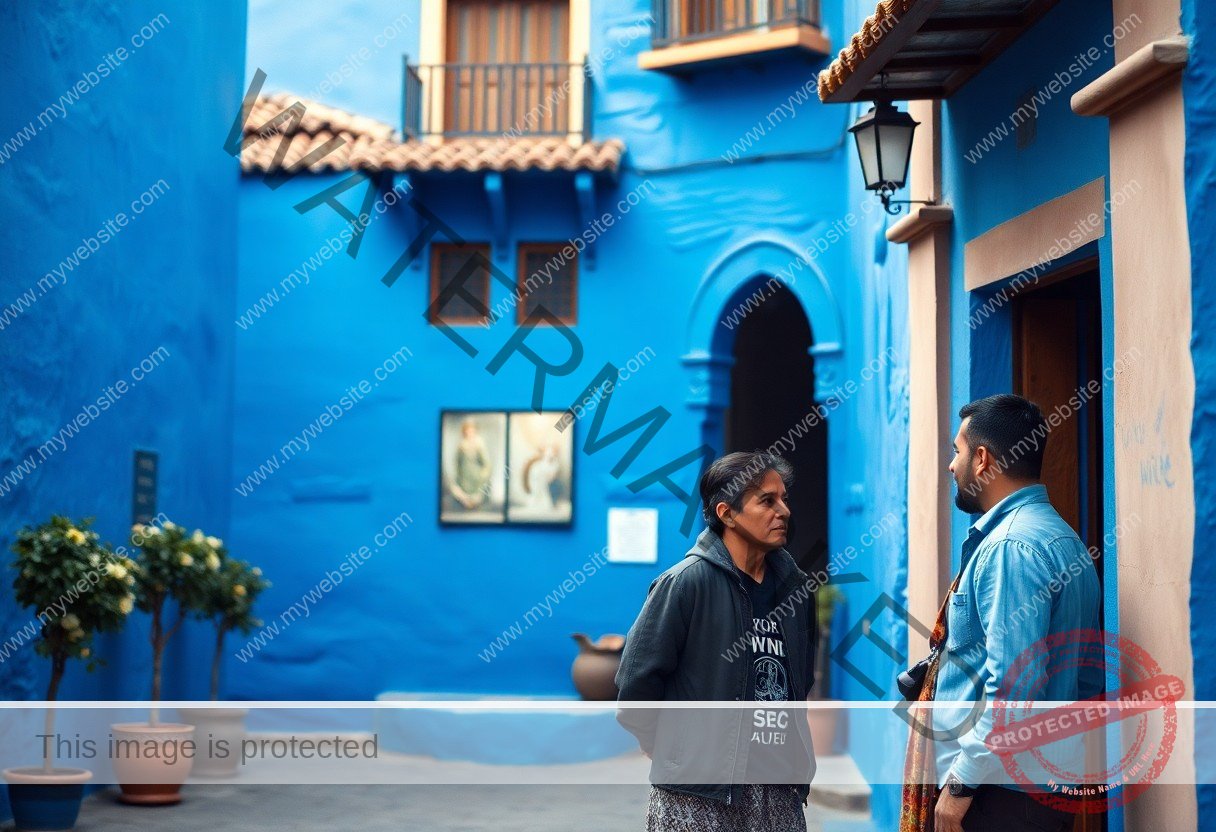
Language and Tourism
Your experience in Chefchaouen will be enriched by the linguistic diversity present in this beautiful city. Many visitors appreciate the ability to communicate with locals in Arabic and Amazigh, while French and Spanish are also widely understood. According to Chefchaouen‘s cultural context, this multilingual aspect enhances the tourist experience, enabling you to connect deeply with the local culture.
Impact on Visitor Experience
Any traveler who visits Chefchaouen will find that language plays a significant role in their interactions. The ability to converse in multiple languages allows you to explore the city’s vibrant markets and gain insights from the locals, making your visit more immersive and enjoyable.
Multilingualism in the Hospitality Sector
Beside the general population, the hospitality sector in Chefchaouen also embraces multilingualism. From hotels to restaurants, staff members often speak multiple languages to cater to diverse visitors, making it easier for you to navigate your stay.
The prevalence of multilingual staff in Chefchaouen’s hospitality sector ensures that your needs are met with ease. Language barriers are minimized, allowing you to effortlessly ask for recommendations, understand menus, and engage in meaningful conversations. This openness not only enhances your overall experience but also fosters a welcoming environment that makes your visit more enjoyable and memorable.
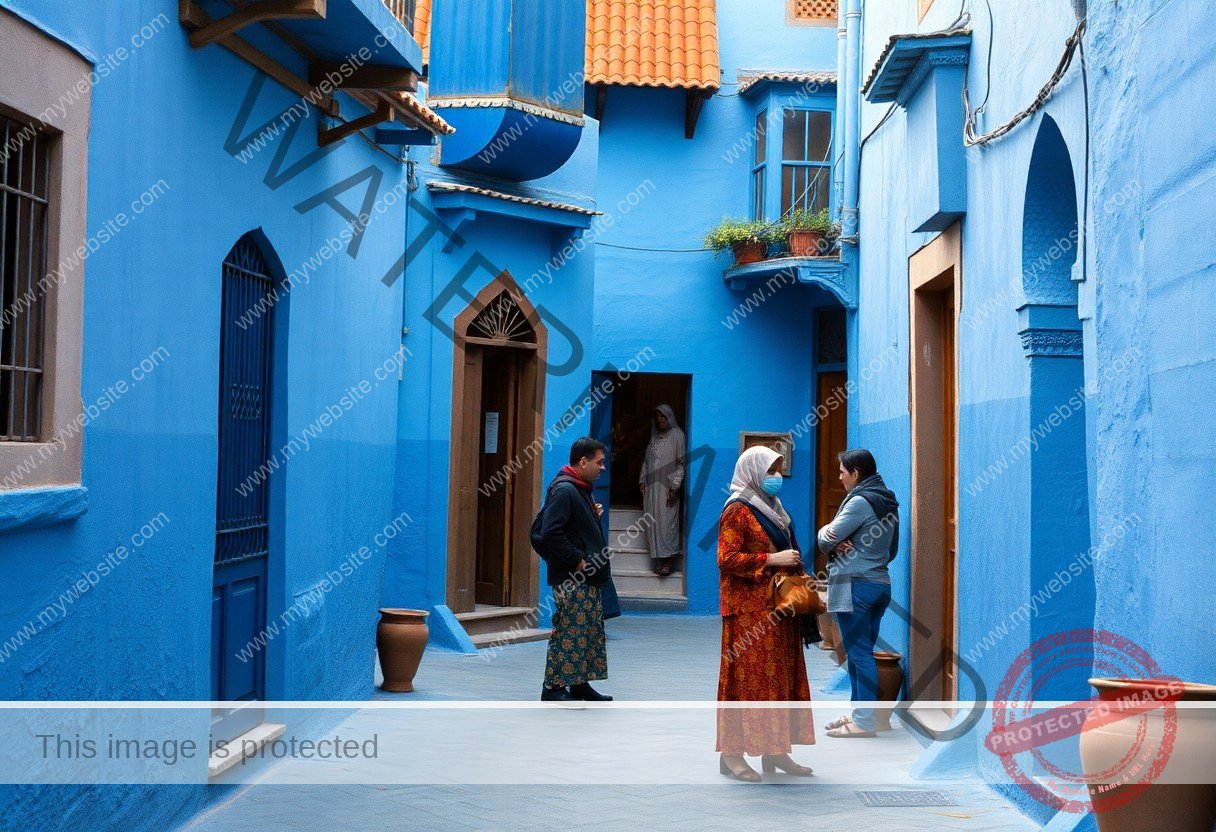
Future of Language in Chefchaouen
To understand the future of language in Chefchaouen, it’s necessary to recognize the increasing influence of globalization. As tourists flock to this charming city, you’ll likely hear a variety of languages, from Spanish to English, mingling with the local Berber and Arabic dialects. You can learn more about this beautiful city by visiting Chefchaouen. The blending of cultures may lead to a dynamic linguistic landscape where traditional languages coexist with newer influences.
Trends in Language Use
An observable trend in Chefchaouen is the rising use of Spanish and English, especially among the youth and those engaged in tourism. As these languages become more prevalent, they intermingle with local dialects, creating a fascinating linguistic tapestry that reflects the city’s multicultural allure.
Language Preservation Efforts
Behind the scenes, community leaders and educators are advocating for the preservation of Berber and Arabic languages. Their initiatives aim to ensure that younger generations learn their native tongues while appreciating the linguistic diversity in their region.
It is vital to support these preservation efforts, as they can include workshops, cultural events, and educational programs. By engaging in community activities or promoting local languages, you contribute to maintaining the unique linguistic heritage of Chefchaouen. This not only helps retain traditional expressions and knowledge but also reinforces a sense of identity among its residents.
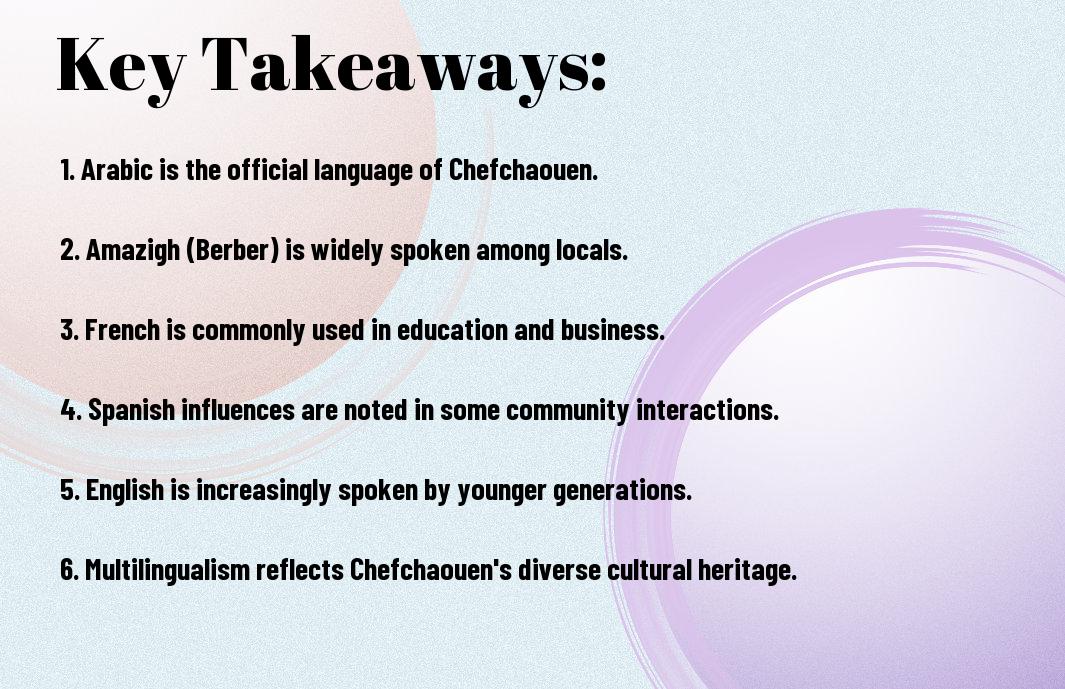
Summing up
As a reminder, when you visit Chefchaouen, the primary languages spoken are Arabic and Amazigh (Berber), with many locals also fluent in French and some English. This multilingual environment reflects the region’s rich cultural history and makes communication easier for you as a traveler. Familiarizing yourself with a few common phrases in these languages can enhance your experience and interactions while exploring this picturesque blue city.
FAQ
Q: What language is primarily spoken in Chefchaouen?
A: The primary language spoken in Chefchaouen is Arabic, specifically the Moroccan Arabic dialect known as Darija. In addition to Arabic, many residents also speak Tamazight, which is the Berber language, due to the significant Berber population in the region. Spanish and French are also commonly understood, especially among those involved in tourism, as Chefchaouen is a popular destination for international visitors.
Q: Are there any other languages spoken in Chefchaouen?
A: Yes, aside from Arabic and Tamazight, you will find that many people in Chefchaouen can communicate in French and Spanish, particularly in businesses, restaurants, and hotels that cater to tourists. English is also becoming increasingly popular, especially among younger generations and those involved in the tourism industry. It is advisable to learn a few basic phrases in Arabic or French to enhance your interactions while visiting.
Q: How does the language spoken in Chefchaouen reflect its cultural diversity?
A: The linguistic landscape of Chefchaouen is a reflection of its diverse cultural heritage. The city’s history includes influences from various cultures, including Berber, Arab, Spanish, and French. This linguistic blend highlights the local population’s ability to coexist and adapt, showcasing aspects of their identity and customs through language. The use of multiple languages in daily life demonstrates the town’s welcoming nature to both locals and tourists, contributing to Chefchaouen’s rich cultural tapestry.
